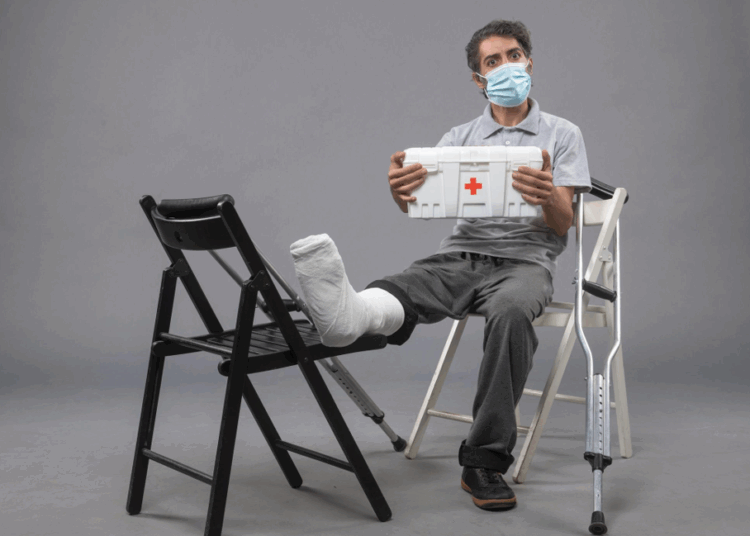As we progress through 2025, alarming trends in personal injury statistics reveal a concerning pattern of increased accidents and injuries across multiple sectors. From motor vehicle crashes to workplace incidents, the data paints a sobering picture of rising personal injury cases that are reshaping the legal landscape and impacting millions of Americans.
The Scale of the Problem
The personal injury sector has experienced unprecedented growth, with the market expanding significantly over recent years. There are 64,331 personal injury law firms in the US, representing a substantial increase that reflects the growing demand for legal services in this area. This proliferation of legal practices directly correlates with the rising number of injury cases requiring professional representation.
Since that low point, preventable deaths have increased by 157%—a much steeper rise compared to the 96% increase in overall death rates during the same period. This dramatic surge in preventable deaths underscores the severity of the current injury crisis, indicating that many of these incidents could have been avoided with proper safety measures and precautions.
Motor Vehicle Accidents Leading the Charge
Motor vehicle accidents continue to dominate personal injury statistics, representing the largest category of cases handled by personal injury attorneys. In 2022, the NHTSA estimated that there were close to 6 million injury-only motor vehicle crashes, meaning they didn’t cause any fatalities or property damage. Over 2 million people were injured in traffic accidents that year. These staggering numbers demonstrate the persistent danger on American roadways.
The demographic breakdown reveals concerning patterns in motor vehicle injuries. Women are over 70% more likely than men to be injured in motor vehicle crashes. Teenagers have crash rates nearly 4 times those of drivers 20 and older. These statistics highlight the need for targeted safety interventions for vulnerable populations, particularly younger drivers who lack experience and women who face higher injury risks despite generally being safer drivers.
According to a Summerlin personal injury lawyer, Morris Injury Law, the complexity of modern vehicle accident cases has increased dramatically due to factors such as distracted driving, aggressive driving behaviors, and the integration of new technologies that can both help and hinder safe driving practices.
Workplace Injury Trends
The workplace remains another significant source of personal injuries, with certain industries showing particularly troubling statistics. Men account for 92% of workplace fatalities, indicating that male-dominated industries often involve higher-risk activities and environments. This gender disparity in workplace deaths reflects the types of occupations men typically pursue and the inherent dangers in construction, manufacturing, and other physically demanding fields.
The injury and illness incidence rate in health care and social assistance was 3.6 cases per 100 full-time-equivalent workers, lower than the rate of 4.5 in 2022. While this represents an improvement in one sector, many industries continue to struggle with maintaining safe working conditions for their employees.
The Settlement Landscape
The legal resolution of personal injury cases has remained relatively consistent, with approximately 95% of personal injury cases are resolved through settlements before reaching trial, a trend that continues in 2024. This high settlement rate indicates that most parties prefer to avoid the uncertainty and expense of trial proceedings, though it also suggests that insurance companies and defendants are increasingly willing to negotiate reasonable settlements.
The timeline for case resolution varies significantly based on complexity, with the timeline can range from a few months for straightforward cases to several years for complex cases involving extensive litigation. This variability in resolution time can significantly impact injured parties who may be dealing with ongoing medical expenses and lost wages while awaiting compensation.
Emerging Factors Contributing to Rising Injuries
Several factors are contributing to the upward trend in personal injuries throughout 2025. The aging population presents unique challenges, as an aging population may lead to increased fall-related injuries, which already account for over 8 million hospital emergency room visits each year. As America’s population continues to age, slip and fall incidents among elderly individuals are becoming increasingly common, creating a significant burden on healthcare systems and generating numerous personal injury claims.
Technology’s role in modern injuries cannot be understated. While technological advances have improved safety in many areas, they have also introduced new risks. Distracted driving due to smartphone use, injuries related to new workplace technologies, and accidents involving emerging transportation methods like electric scooters and ride-sharing services all contribute to the rising injury statistics.
Regional and Economic Impact
The economic impact of personal injuries extends far beyond individual cases, affecting entire communities and regions. Healthcare costs associated with treating injury victims continue to climb, while lost productivity from injured workers impacts businesses and the broader economy. Insurance premiums have risen in response to increased claim frequency and severity, passing costs along to consumers and businesses alike.
The geographic distribution of personal injury cases varies significantly across states, influenced by factors such as population density, traffic patterns, industrial activity, and local safety regulations. Urban areas typically see higher volumes of motor vehicle accidents due to traffic congestion, while rural areas may experience more severe injuries due to longer emergency response times and limited healthcare access.
Future Projections and Prevention Efforts
Looking ahead, several trends suggest that personal injury rates may continue to rise without significant intervention. The increasing complexity of modern life, combined with new technologies and changing work patterns, creates novel injury scenarios that didn’t exist in previous decades. Climate change may also contribute to rising injury rates through more frequent extreme weather events that create hazardous conditions for both drivers and pedestrians.
Prevention efforts are becoming increasingly sophisticated, utilizing data analytics and predictive modeling to identify high-risk situations before accidents occur. Workplace safety programs are incorporating new technologies like wearable sensors and virtual reality training to reduce injury rates. Similarly, automotive safety features continue to evolve, though their effectiveness depends on proper implementation and driver behavior.
The legal profession is adapting to these changing circumstances by developing new expertise areas and utilizing advanced case management technologies. Personal injury attorneys are increasingly specializing in emerging areas such as autonomous vehicle accidents, workplace ergonomic injuries, and technology-related incidents.
As we continue through 2025, the rising trend in personal injuries represents a significant challenge for individuals, businesses, healthcare systems, and the legal profession. Addressing this crisis will require coordinated efforts across multiple sectors, combining improved safety measures, better education, technological solutions, and comprehensive legal support for injury victims. The statistics make clear that personal injuries are not just individual tragedies but a growing societal concern that demands immediate and sustained attention.
We’ve got the edge. Get real-time reports, breaking scoops, and exclusive angles delivered straight to your phone. Don’t settle for stale news. Join LEADERSHIP NEWS on WhatsApp for 24/7 updates →
Join Our WhatsApp Channel










